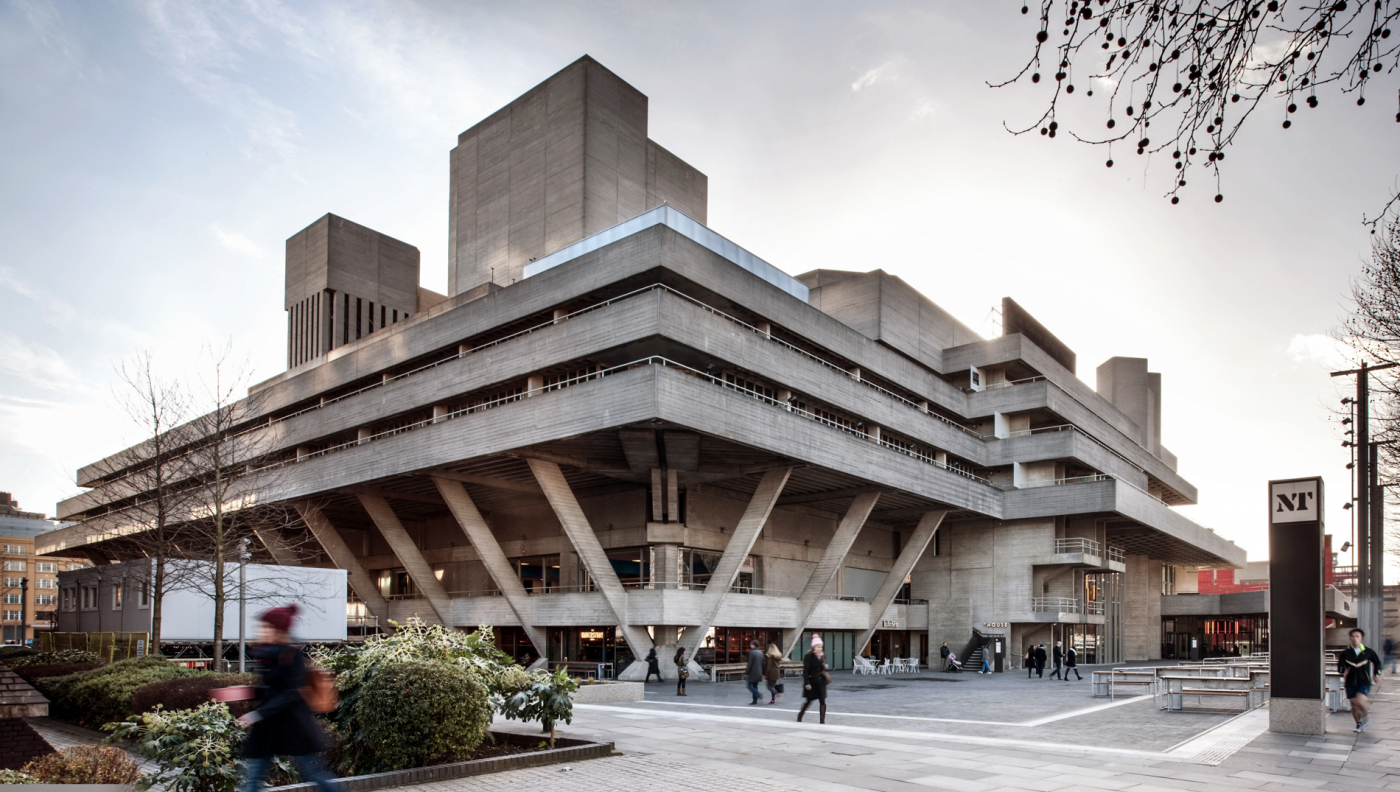London’s South Bank, the capital’s official culture zone, began life as muddy marshland. Back then, the citizenry dismissed any idea of life south of the river, a bit like black-cab drivers, so when they succumbed it was to live on streets such as Lower Marsh and Upper Ground (God knows what “Lower Ground” was like) in buildings kept afloat on the clay deposits by means of pontoons used as foundations (which still holds true today, the pontoons are just bigger).
It’s a Brutalist concrete giant, which Prince Charles worries himself sick over, castigating damn modernists as “worse than the Luftwaffe”
This was before most of our great-grandparents were born. Soon, there came wars, McDonald’s and YouTube (I’m skipping over a couple of details here). Along the way, the National Theatre, 40 years ago exactly (as I write), settled in for the long haul, promptly becominga dicture on both the Britain’s Best Loved Buildings list and its Most Hated: an architectural X Factor contestant.
It’s a Brutalist concrete giant, which Prince Charles worries himself sick over, castigating damn modernists as “worse than the Luftwaffe”. They may have bombed large parts of London in the Blitz, but the squadrons at least “only left rubble” – as opposed to this concrete blight before him. Its bulky terraces overlook the Thames towards the classic lines of Somerset House; stage left is the Festival Hall, while downriver the ethereal dome of Christopher Wren’s St Paul’s Cathedral stands proud.

The National Theatre, London
Ironically, the NT ended up on this plum waterside location, surrounded by proper architecture, by default. The project was moved around from one proposed site to another so many times that the then Queen Mother remarked that the foundation stone which bore her name should be put on castors.
That the actual design was always going to create its own theatre of war is not surprising since actors in general, and the legendary Laurence Olivier in particular, are not known for keeping mum. Sir Larry was boss in those days and from the outset The National courted controversy. Theatre design was paramount and while the auditoria inside are pitch perfect with unbroken sightlines, the outside is another matter entirely.
I doubt that anyone else really loves the National Theatre building
The chosen architect was Denys Lasdun, a leading modernist who confusingly eschewed the Brutalist epithet despite repeatedly working in concrete. He turned up to his interview alone, rather than surrounded by a team of creatives: Sir Larry thought this “very dramatic”. For six years Lasdun would take all the flak for the budget, the design, the neverending schedule – but he could dish it out too. During one especially fractious four-hour meeting, he announced, with obvious frustration, that an “architect is neither a magician nor a computer”. This war-and-no-peace period drama is captured in Concrete Reality by Patrick Dillon, the architect and writer who recently completed a six-year refurbishment of the NT. He clearly loves the building, which I do not, but then again I didn’t appreciate The Incredible Hulk until Ang Lee directed his version. Dillon’s enthusiasm, hindsight and adoration is infectious.

The National Theatre, by Philip Vile
I doubt that anyone else really loves the National Theatre building, as opposed to the performances to be found therein, but that’s not to say it should be despised. It’s a period marvel of some wonder, its intricacy and functionality not instantly recognisable in, well, layers of rough concrete. You may as well say you hate the Pantheon, which the Romans built 2000 years ago, and where the unsupported dome ceiling is made from the same stuff.
On the Twilight Architecture Tour, a lively and engaging guide, Alison Rae, enthuses intelligently, especially about the building’s materials. Walls are deliberately unrendered to show off the woodgrain of unplaned planks, forming the moulds inside which poured concrete set. In later years such finish would be smoothed, but Ladsun saw this rough texture as true and raw: the very term Brutalism comes from Le Corbusier’s béton brut, meaning raw concrete. The whole idea is that the design does not intrude on the stagecraft, a dull palette being especially helpful.
Spread over several floors and covering a vast area, the NT’s unfussy platforms, terraces and foyers are really designed for the audience to perform as an integral part of the whole, ebbing and flowing (outside, the Thames is, significantly, tidal) to create colourful movement amid a sophisticated buzz. Dress up! Your evening will be less bright, less enchanting if you don’t buy into Lasdun’s freeflowing utilitarian and democratic vision. Join him in forsaking the elitism of traditional theatre design. Imagine if history condemned The National because the audience was dull, bulky and boring.
As a postscript for those who really do dislike The National: fear not, the future is bright. Postwar Britain required half a million new houses and concrete was a cheap, universal saviour for everything from prefab domestic homes to vast public structures. However cement, the flour in concrete’s bread, turns out to be environmentally unfriendly to manufacture, producing vast amounts of carbon dioxide. Which is why we now use steel, glass and a variety of other sustainable materials in building. C
The Twilight Architecture Tour of The National Theatre is bookable via nationaltheatre.org.uk
Concrete Reality: Building the National Theatre by Patrick Dillon is available from the National Theatre Bookshop






